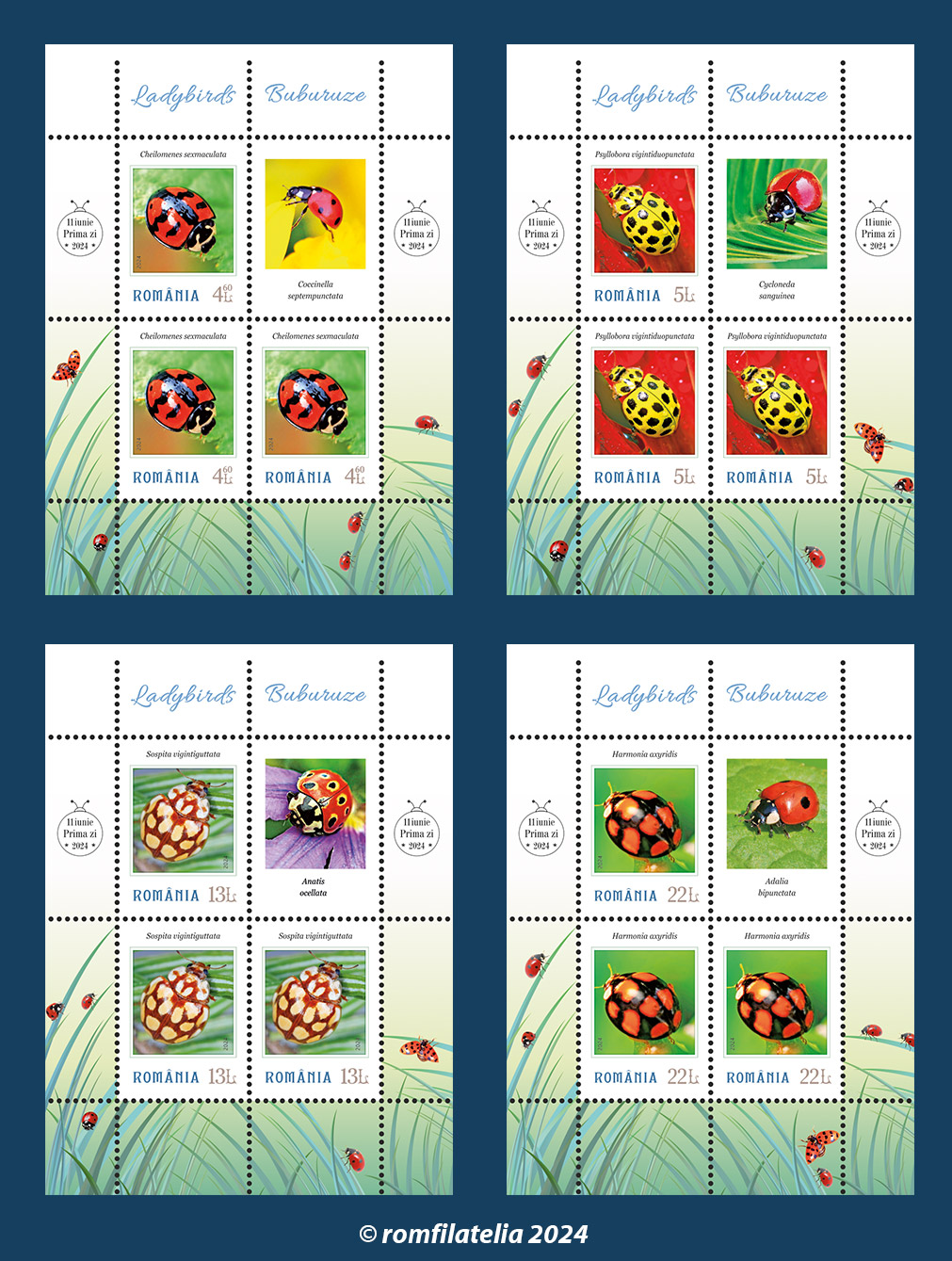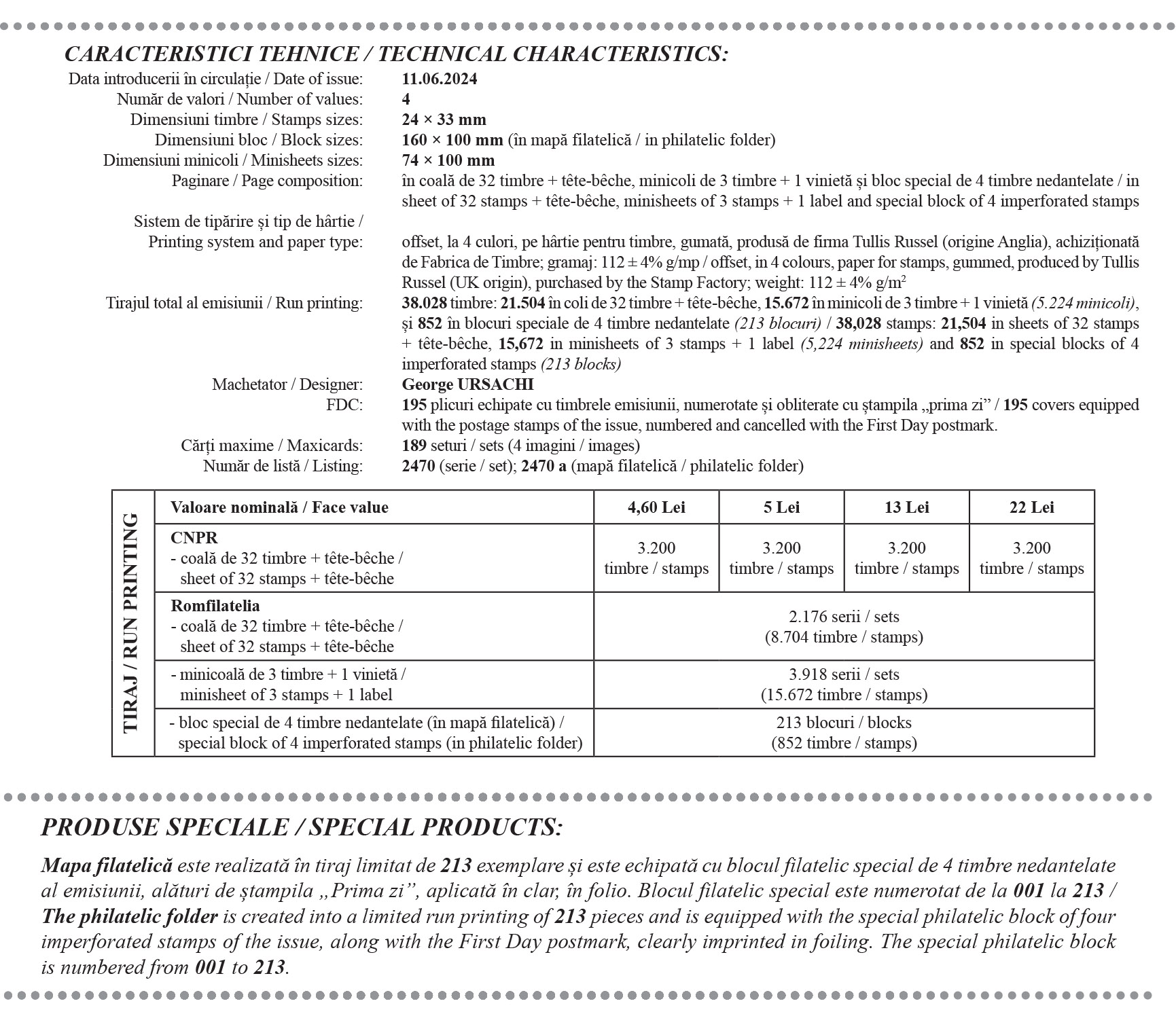 Romfilatelia introduces into circulation on Tuesday, June 11th this year, a postage stamps issue included in an appreciated collection theme, that of Fauna, with the title Ladybirds. This issue consist of 4 stamps, 1 First Day Cover, a philatelic folder with special product in a limited edition and a set of 4 maxicards for the passionates of maximaphily.
Romfilatelia introduces into circulation on Tuesday, June 11th this year, a postage stamps issue included in an appreciated collection theme, that of Fauna, with the title Ladybirds. This issue consist of 4 stamps, 1 First Day Cover, a philatelic folder with special product in a limited edition and a set of 4 maxicards for the passionates of maximaphily.
The four postage stamps reproduce images of insects whose characteristics make them stand out as surprising appearances through colouring and shapes: Cheilomenes sexmaculata septempunctata (face value of Lei 4.60), Psyllobora vigintiduopunctata (face value of Lei 5.00), Sospita vigintiguttata (face value of Lei 13.00), Harmonia axyridis var. axyridis (face value of Lei 22.00).
Ladybirds, some of the most well-known and beloved insects in the world, belong to the Coccinellidae family. In some countries, they have names associated with the Virgin Mary: măriuță in Romanian, Marienkäfer in German, ladybird in English. In French, the ladybird is known as la bête à bon Dieu (God’s animal), and in Russian there is the name Bojia korovka (God’s cow). The connection with the Virgin Mary comes from the association of the colour of the insects with the red mantle worn in many depictions of the Virgin.
The popularity that ladybirds enjoy among children and the majority of the population is also proven by the fact that the American states of Delaware, Massachusetts, New Hampshire, New York, Ohio and Tennessee have chosen the ladybird (alone or together with other species) as the official insect of the state. (The rest of the American states mostly chose the bee and butterfly species, and as an interesting fact, we mention that the symbol chosen by Japan is the dragonfly.)
There are over 6,000 species of ladybirds found on all continents, except Antarctica. In Romania, there could be approximately 100 species.
Ladybirds range in size from 0.8 to 28 mm.
Ladybird species have various colorations, many of them brightly coloured, with variations on the well-known “dotted” pattern. There are also species that do not have a single pattern but many variants, sometimes extremely different. More common in our country are red ladybirds with two or seven black spots.
Along with being appreciated for their optimistic appearance, ladybirds are an invaluable aid to agriculture and horticulture, because they often feed on some of the most voracious pests: aphids or plant lice. Ladybirds also eat mites, turtle lice, small caterpillars, etc. They are thus considered an aid to ecological agriculture, substituting the use of insecticides.
They can be attracted to areas that need to be protected from pests by the presence of their favourite plants: angelica, primrose, sea lavender, milfoil, cumin, bluebells, dandelions and mint.
These insects have as enemies some birds (including sparrows), spiders, ants, etc.
Most species of ladybirds live up to a year; some can live as an adult for about two years, under certain environmental conditions. They live in various habitats: forests, meadows, weedy areas, gardens, etc. They can hibernate and even summer (go dormant during the dry summer).
Popular tradition considers them a symbol of good luck (they are reproduced as mărţişoare – March amulets), protection and an atmosphere of calm and tranquillity. Their presence near people would constitute a bulwark against evil.
Romfilatelia thanks biologists and museographers, Mr. Alexandru Iftime, Ph.D., and Ms. Andreea Drăghici Ph.D. from the “Grigore Antipa” National Museum of Natural History for the specialized advice granted to the development of this postage stamps issue.



